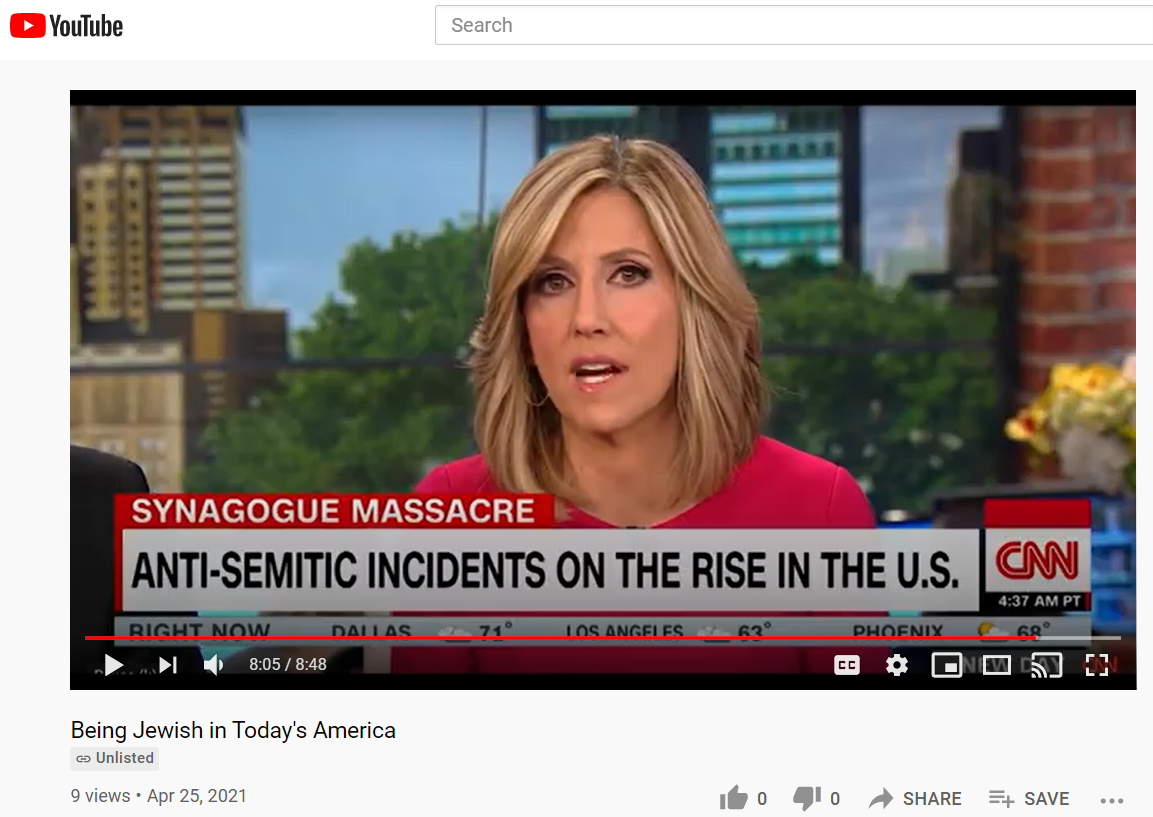Antisemitism is any perception that sees Jews with a negative connotation. It has manifested in the US as anything from an undercurrent or a “cold shoulder,” to mass shootings at synagogues and bomb threats at Jewish day schools. As demonstrated by the Holocaust, during which 6 million Jews and 11 million people overall were exterminated by the Nazi regime, antisemitism and other forms of hate have the potential to create substantial and lasting damage. If it happened in Europe, it can happen here too. A plethora of resources, including Psychology Today, assert that hate, at its roots, comes from a fear of the other. Therefore, an effective technique for combating antisemitism is to educate people at a young age about Jewish culture and the impacts that antisemitism can have on Jews and society at large. This is exactly my engaged project: a lesson plan and short video intended to educate non-Jewish children in grades 3-5 about the current state of antisemitism in the US, and a bit about Jewish culture.
Sponsor: Tali Marotz, Jewish Educator and Artist
Student reflection excerpt:
I learned a ton about the psychology of hate, about using Adobe Premiere Pro to create evocative video content, and about how to manage people. I feel that I have most definitely come out of this course as a stronger “change-maker” and as a more effective advocate for American Jews in the face of hate.
After Wesleyan, I am currently planning to attend rabbinical school. So, as a Jewish religious leader, it will be my duty in particular to continue this work. Even beyond becoming a rabbi, I feel it is also my obligation as a Jew to stand against antisemitism. As Rabbi Hillel once said, “if I am not for myself, who will be for me? And if I am only for myself, what am I? And if not now, when?” (Pirkei Avot 1:14)
Instructor reflection:
Your attention to detail and level of accountability are off the charts! This work style ensured that your research was thorough, your project was always on track, and your relationships with partners and audiences were properly nurtured. In addition, your project goals – to “challenge students to think critically about Judaism, culture, ethnicity, hate, anti-Semitism, and racism” and to “prompt students to find ways to be active agents in the fight against anti-Semitism” – are undeniably timely and important. It was a pleasure to work with you this semester.


